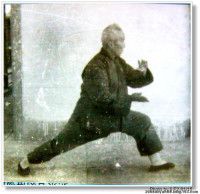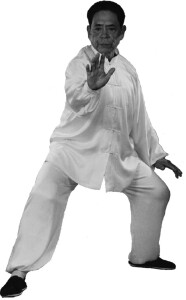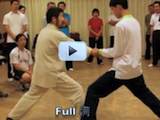The Tai Ji state we are talking about has two parts. One part is concrete, and the other part is abstract. Both are real, not imaginary.

The first part is concrete, mainly in these three aspects of structure, energy alignment and speed. The abstract part is the overall coordinated structure, please refer to the article of Mr. Sun Zhonghua linked at the end of this article.
In terms of structure, the foundations and forms of our Taiji (the author analyzes based on Chen Style Taijiquan Practical Method and Hunyuan Taiji) are different from those of other styles. Some of these differences are external, but subtle and difficult to detect. Some are internal and even more difficult to see.

Grandmaster Feng Zhiqiang
All martial arts styles require balance in movement and structure, but external martial arts can achieve balance with power. Taijiquan strictly requires balance to be achieved without external force as much as possible. Therefore, this style can be practiced in the same way until old age.
The special requirements of Taiji structure are even more stringent on angles. This requirement forces practitioners to make principled adjustments (re-calibrations) to every part of the body. One result of this is that one aspect of Tai Ji Kung Fu comes from the concept of two-point alignment. Alignment (and aiming accuracy) is also a point that enables the elderly to practice useful Kung Fu.
With the accurate arrangement of the positions of body parts and strict angle requirements between parts, the practice of foundations and routines will make the energy alignment smooth. Grandmaster Hong Junsheng compared this to laying railway tracks. With tracks, trains can run smoothly and effortlessly.
With the structure and movements, under the guidance of the teacher, the practice of routines will use the big concept of rhythm to train fast and slow alternating, resulting speed difference, time difference, rhythm difference, etc, which is unique to Taiji, so as to fully utilize space through time. This type of movement is some folding. The practice of methods such as taking out space, adjusting angles, grasping rhythm, etc. will eventually allow students to obtain time difference as a type of Kung Fu.
Through the above three unique methods, we will eventually practice a unique martial art-Taijiquan. This type of martial art is slightly different from other styles in appearance under the big techniques and same principles, and completely different from other styles in connotation. It is essentially not in the same dimension as other styles. This is what we call the Tai Ji state!
Original post in Chinese by Master Chen Zhonghua. Translation-Yuxin Liu


